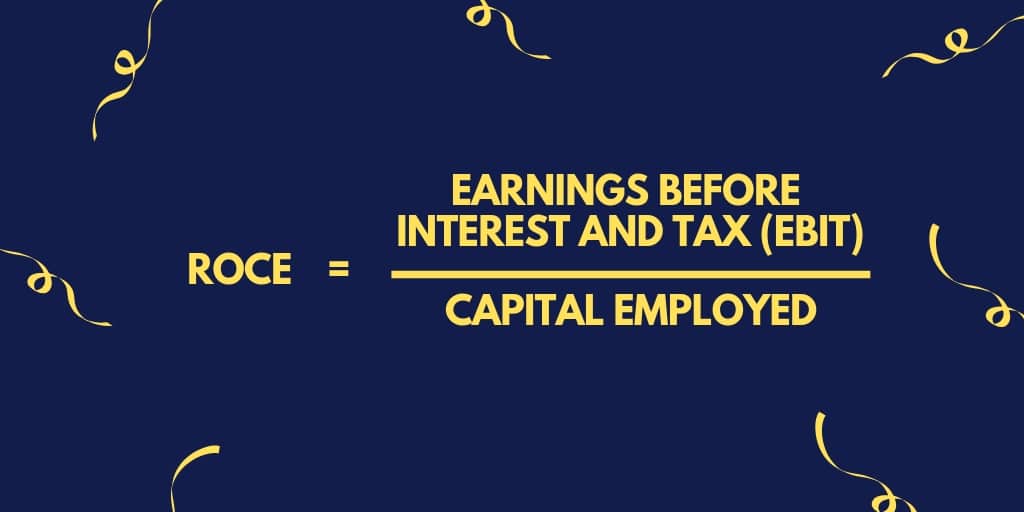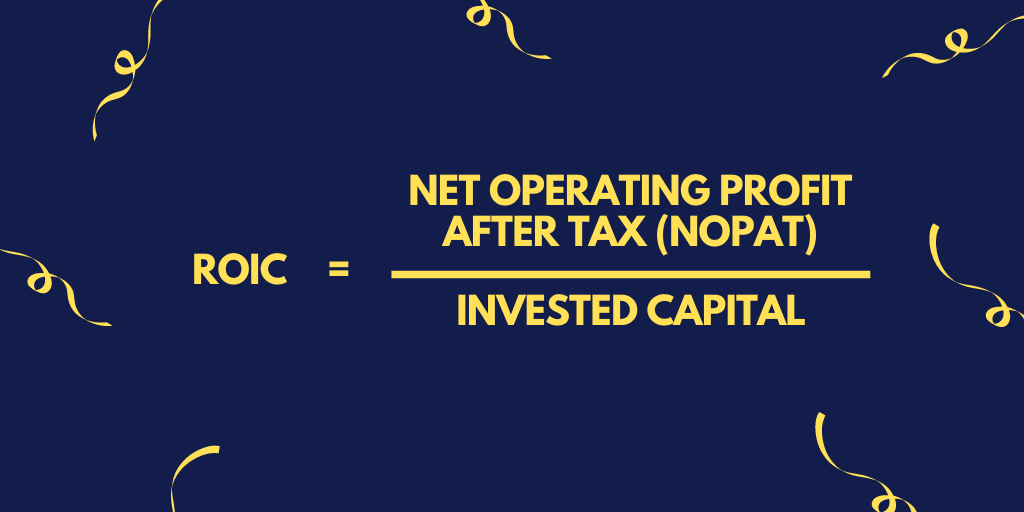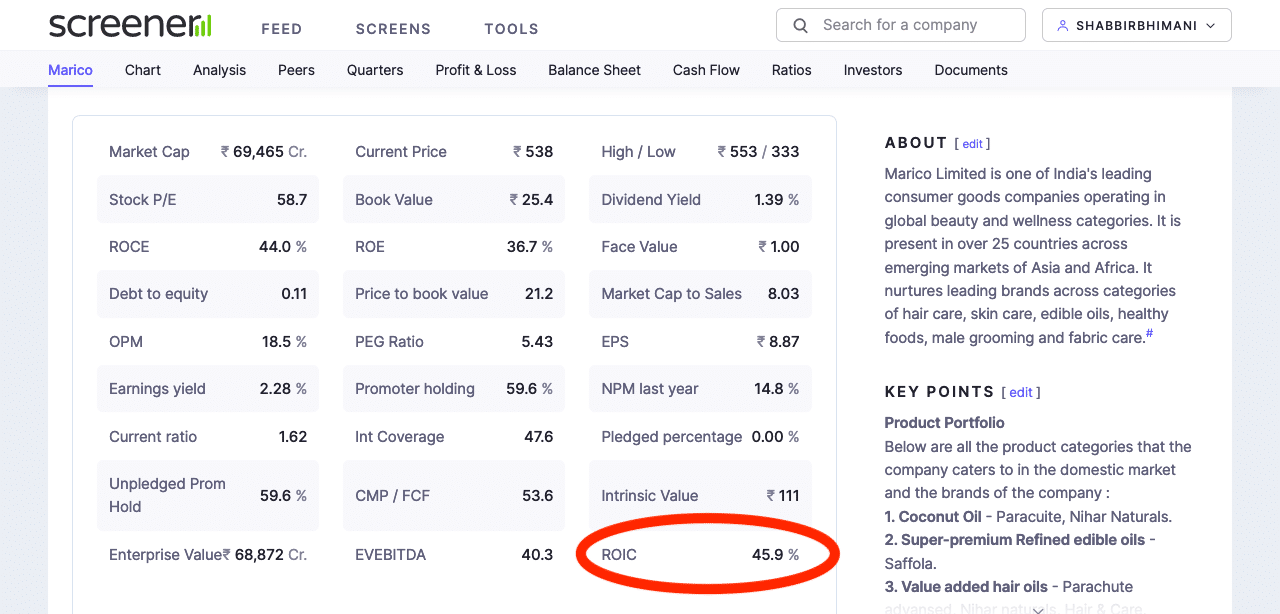ROIC (return on invested capital) and compare it with ROCE and how ROIC is much better choice for investors when compared with ROCE
ROCE is the net operating income divided by the total capital employed, whereas ROIC is the net operating income divided by invested capital.
I am sure you have not understood a single bit of the above statement and so let me clarify the concept of ROIC in simple language first.
Then we will look into how ROIC is an essential aspect of investing, how we can calculate or get the ROIC of a company, and finally, how we can understand the reinvestment rate with ROIC.
So without much ado, let’s begin.
What is ROCE?
ROCE stands for return on capital employed, which means the return promoters can generate from the cash or capital deployed in the business. It is a way to measure the efficiency of the management, which deploys the cash at a better than money market rate for an extended period.

For more details on ROCE, you can refer to the article – What is ROCE & How to Use ROCE to Invest in the Right Stock?.
What is ROIC?
ROIC is an abbreviation for Return on Invested Capital. It is the ratio of net operating income and invested capital. It means the return the promoters can generate from the cash or capital currently invested in the business.

ROIC, like ROCE, is also a way to measure the efficiency of the management. In other words, how they are using the invested capital to run the business efficiently.
The numerator in ROCE uses the pretax income or EBIT income, whereas, for ROIC, we use Net income post-tax.
The denominator in ROCE considers the capital employed, which is the total capital in the business. Whereas for ROIC, we use invested capital, the amount of capital circulating in the company.
However, there are other formulas for ROIC like:
ROIC = (net income – dividend) / (debt + equity)
The Importance of ROIC
Mathematically we have understood how to calculate ROIC and ROCE. As an investor, what is more, important is how ROIC can help in analysing a business.
So let me help you understand ROIC further.
But, first, let us understand how capital employed is different from invested capital.
Total capital employed in the business include debts and other capital like shareholders’ capital etc. Invested capital only consists of the active capital in circulation for doing the business. So it excludes non-core assets or investments.
The importance of ROIC lies in the fact that if it is higher than its average cost of capital and retains its earnings, it can create significant value for investors.
ROCE is more relevant from the company’s perspective, where they can estimate the return they can generate on the total capital employed deployed in the company. In comparison, ROIC is more relevant from an investor’s perspective because it signifies value for the investors on the incremental cash being generated within the company.
The critical difference between ROIC and ROCE is that ROCE is based on pre-tax numbers while ROIC is based on post-tax numbers.
How to get the ROIC of Listed Businesses?
As an investor, you can use Screener.in to get ROIC.
Here is the ROIC on Screener for Marico Ltd.

As we can see, the ROIC for Marico is higher than ROCE.
Here is the ROIC on Screener for Page Industries.

As we can see, the ROIC for Page Industries is lower than ROCE.
Final Thoughts
An ROIC much higher than the average cost of capital for a company means it can generate much better returns for its shareholders. So the company will be trading a much premium than its peers.
So, as an investor, one has to look for companies with moderate ROIC currently and generate much better ROIC in the future.



Hi Shabbir,
Based on above analysis which one is better Marico or Page? Whether Investor should look for ROIC greater than ROCE or vice versa.
Neither based on only ROIC or ROCE. Understanding of business is important than any set of ratios. I wanted to emphasize that both the ratio can be higher than the others.